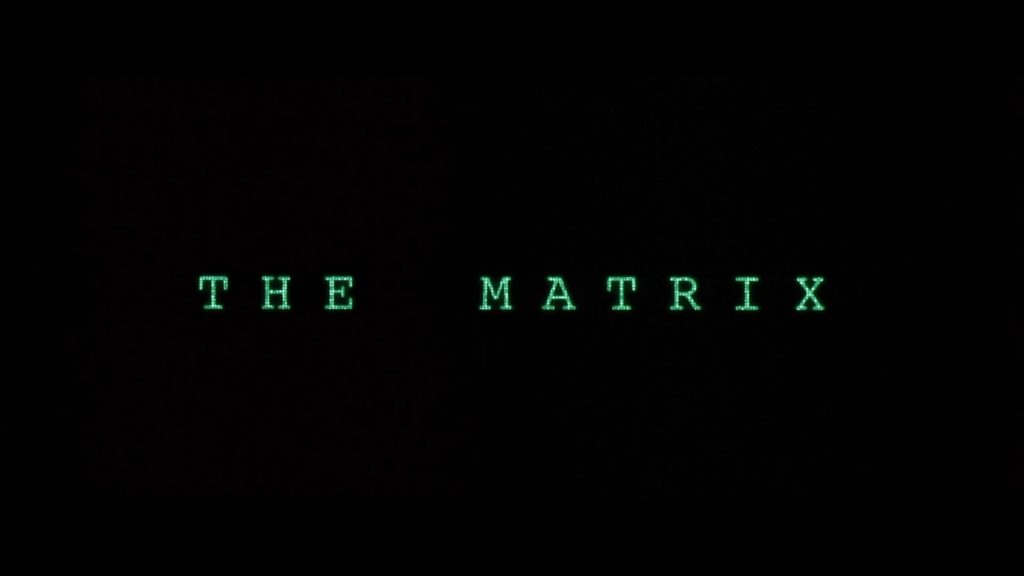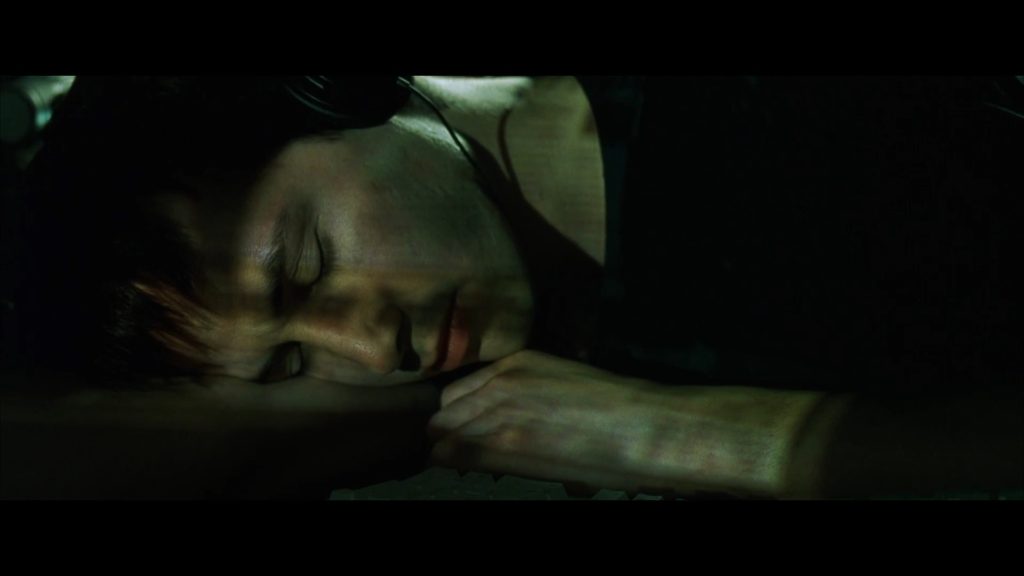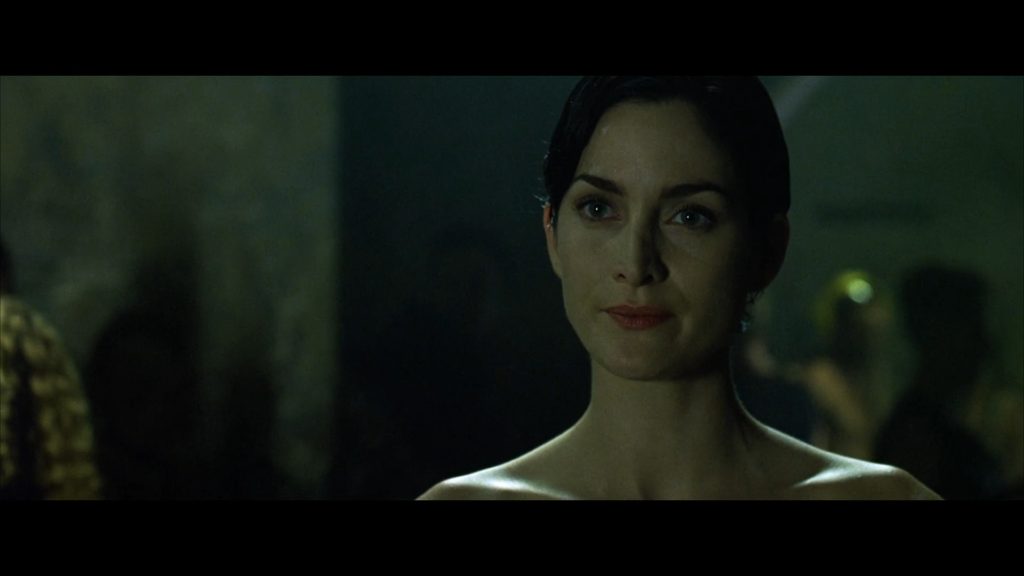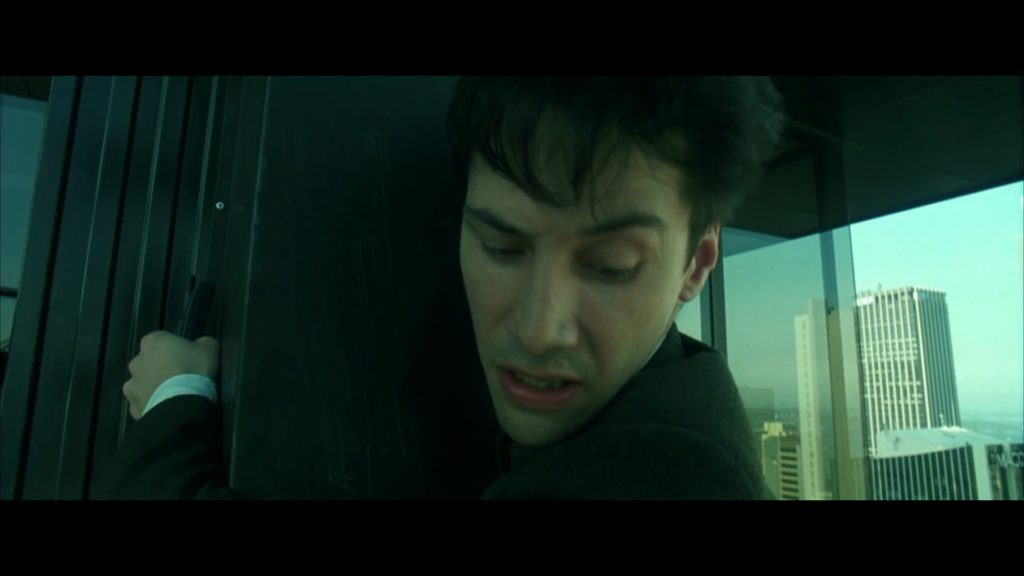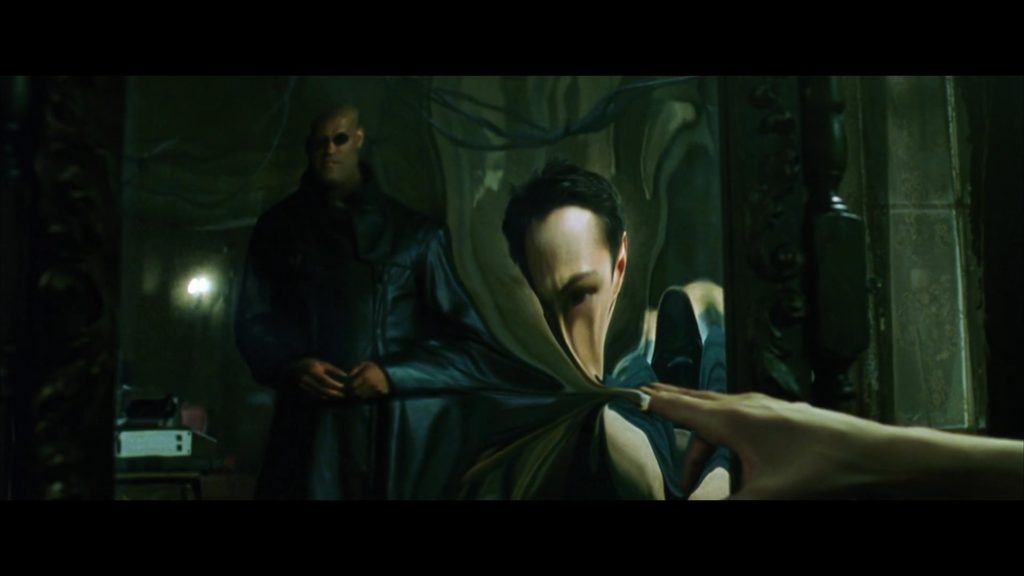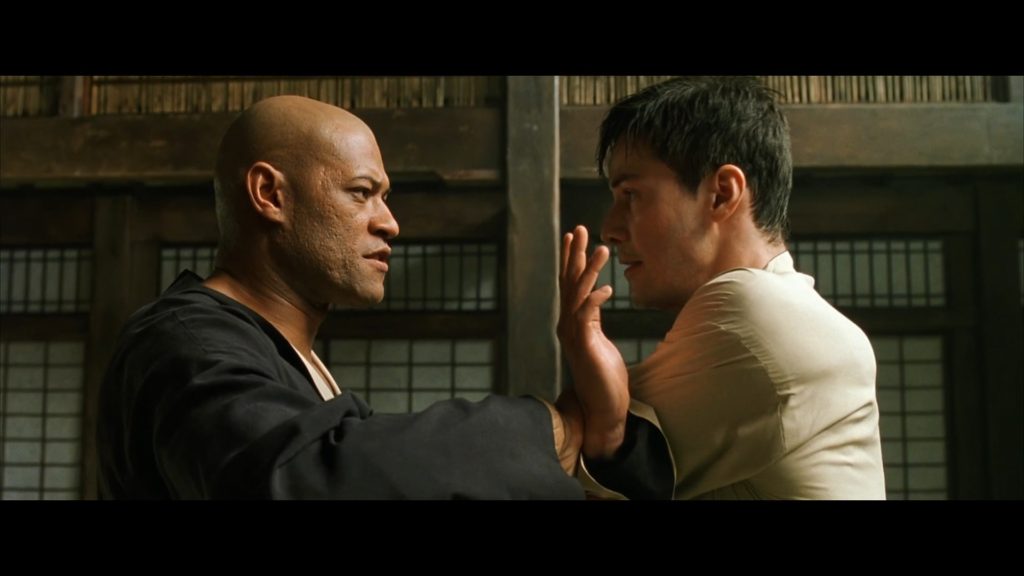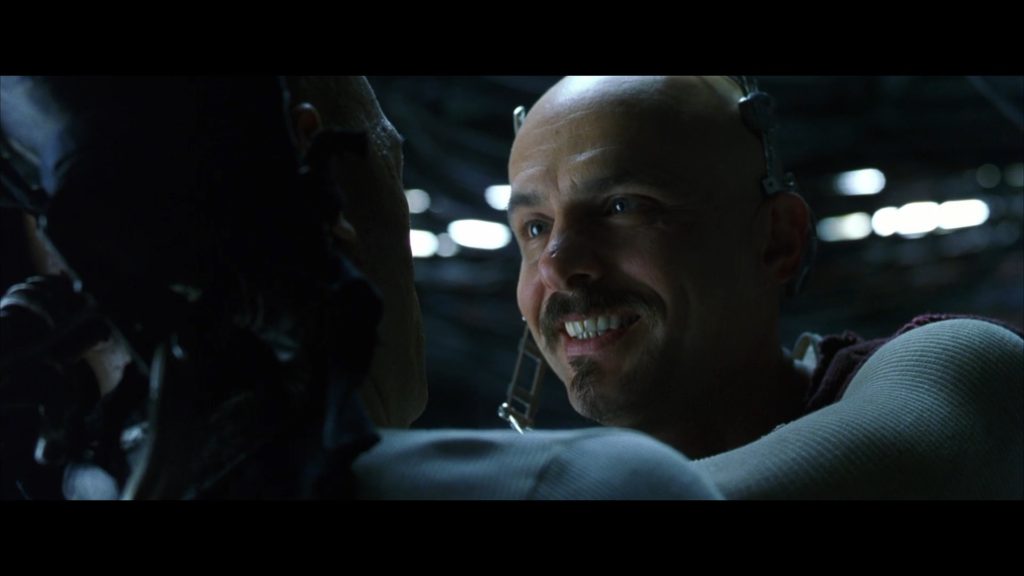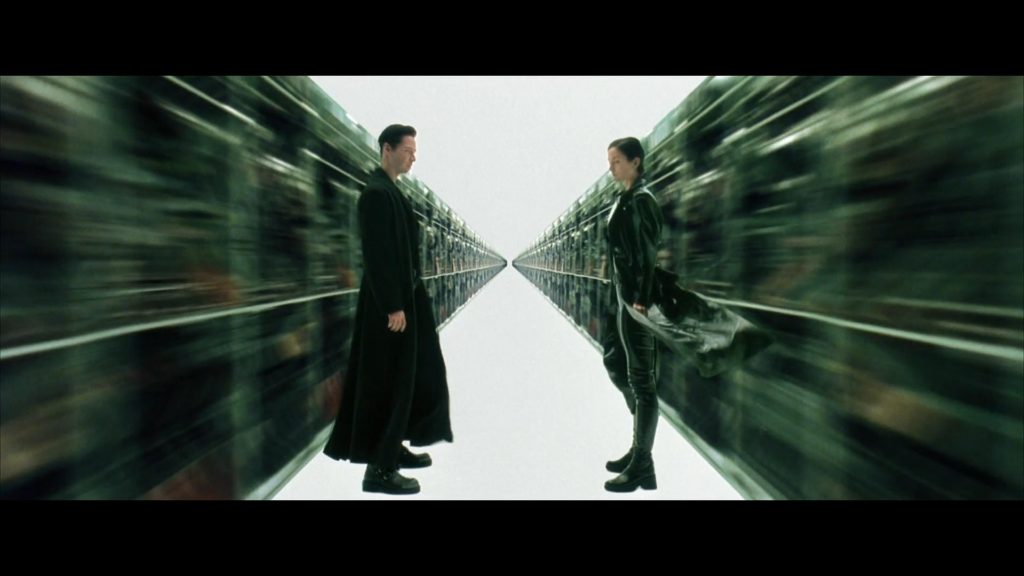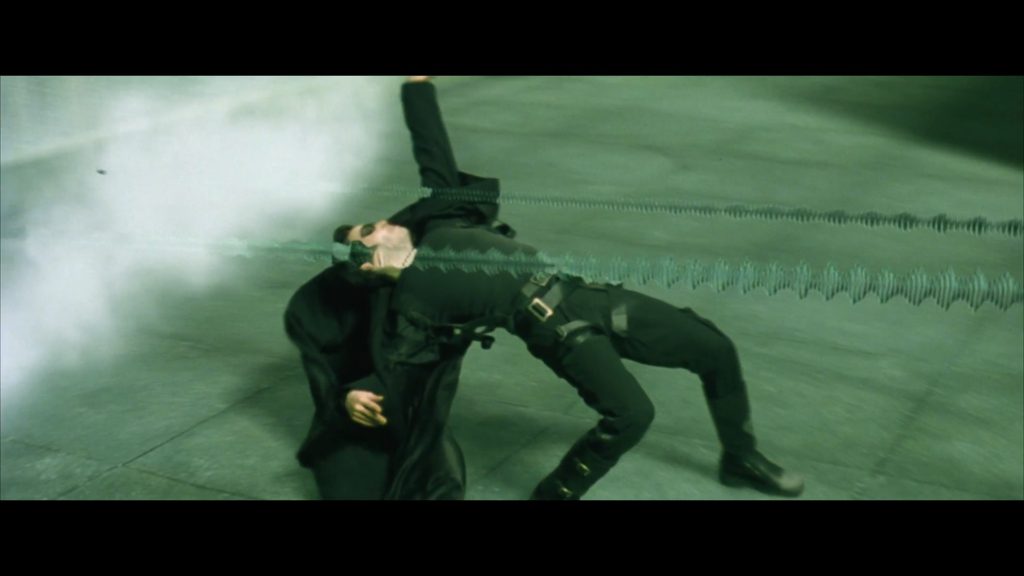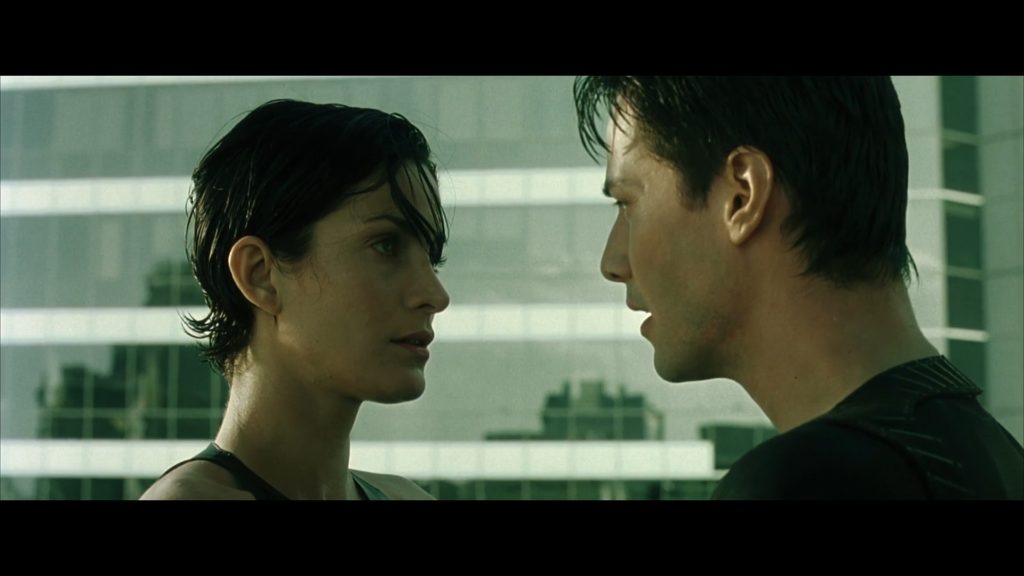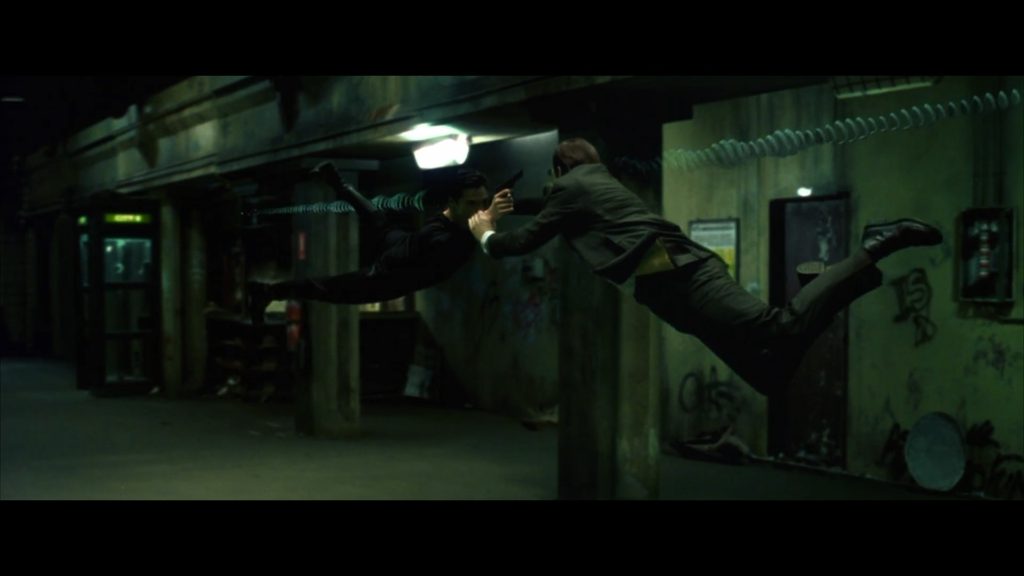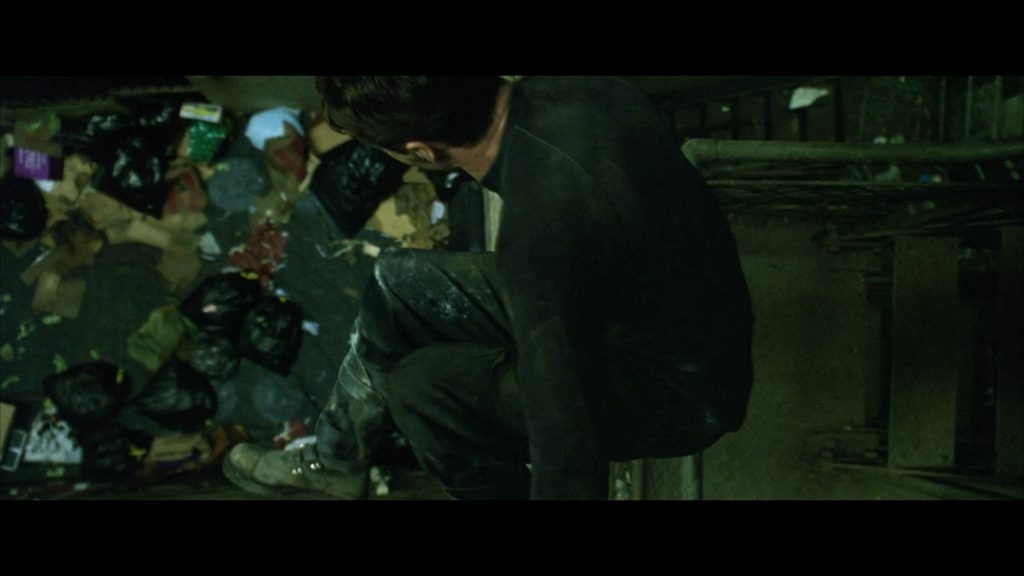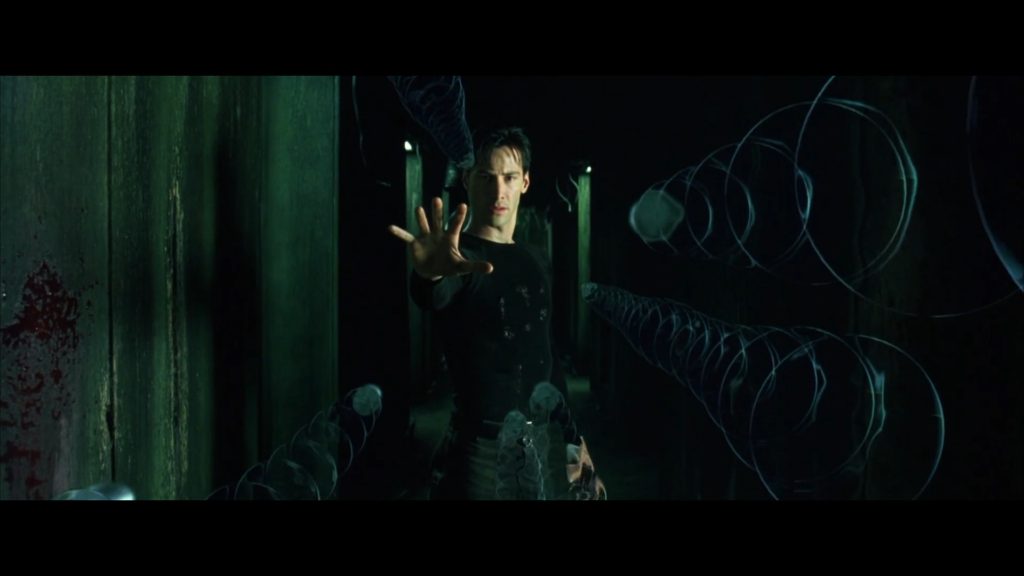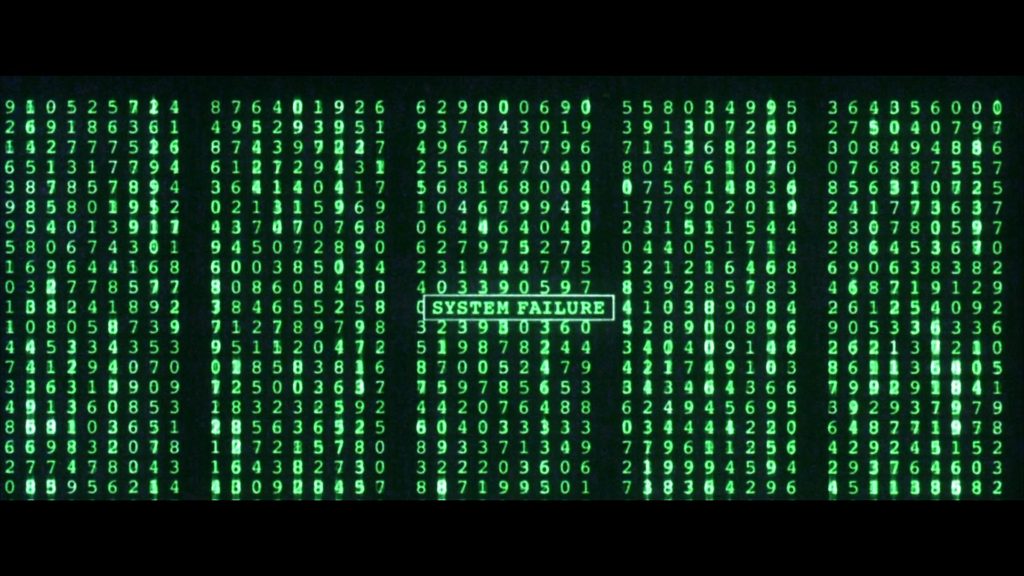Harry Potter and the Philosopher’s Stone has 78 scenes and there are 9 major characters: Harry, Hermione, Ron, Dumbledore, Malfoy, Hagrid, Snape, Quirrell, and the Dursleys. (I’m counting a major character a someone who moves the plot forward in at least one significant way, so the Dursley family counts, but only as a unit.) The page numbers are based on the Slytherin version of the 20th anniversary edition.
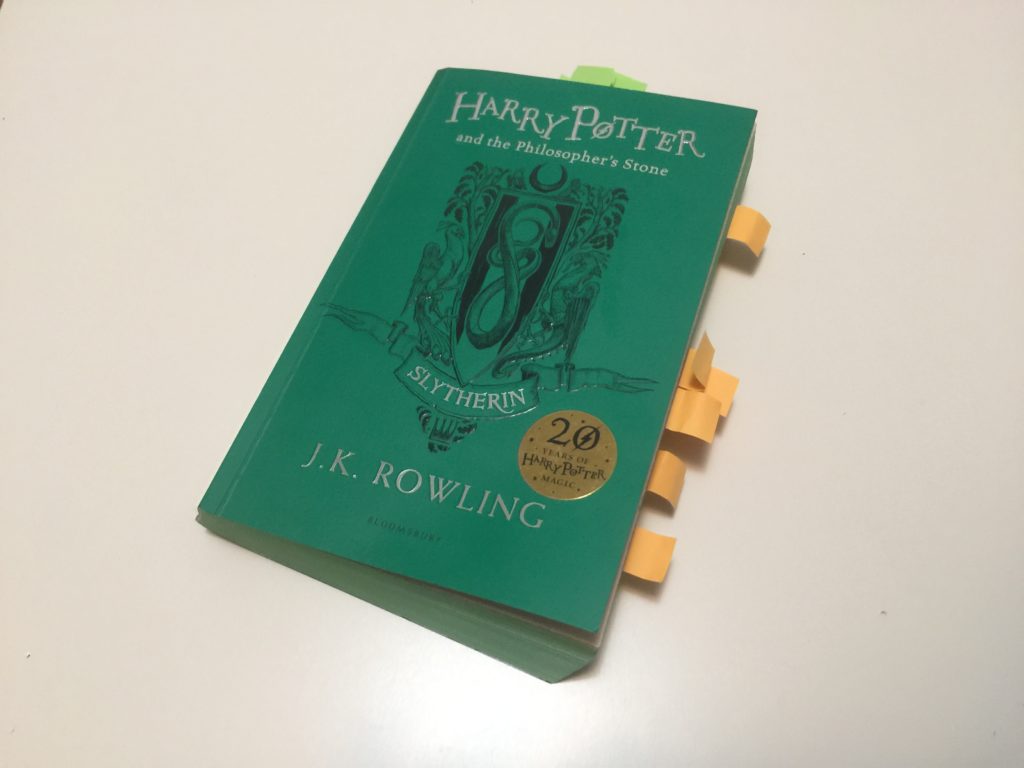
Setting the Stage
Meet the Dursleys – (Pg. 1)
We’re introduced to the Dursleys in their normal lives. Mr. Dursley notices strange things happening around town and asks Ms. Dursley if they might be related to her unusual sister. He mentions that her sister has a son. Ms. Dursley gets upset and Mr. Dursley drops the subject.
The Only Family he has Left – (Pg. 9)
Albus Dumbledore meets Professor McGonagall outside the Dursley’s home. They discuss the fall of Voldemort and the celebrations in the wizarding world. McGonagall asks if the rumors about the death of Harry’s parents and his own miraculous survival are true. Dumbledore confirms they are. He says that he’s leaving Harry with the Dursleys (despite McGonagall’s protests) because they’re all the family Harry has left. Hagrid arrives with Harry and they leave him with a note on the Dursley’s doorstep.
- This scene evokes the ‘infant exiled from their rightful kingdom’ archetype described by Joseph Campbell. Harry is in good company, along with Moses, King Arthur, Sigurd, Romulus and Remus, Hercules, Oedipus . . . well, perhaps we should just stop with Hercules.
- The scene also shows that Harry is special even in a world of wizards. From the moment he survived the Dark Lord’s attack he was clearly touched by destiny and is meant for great things.
Key Takeaways:
- The exiled infant trope is the oldest of the old. One might consider avoiding it for fear of cliche, but Rowling proves that with a quick haircut and some modern clothes, it assimilates effortlessly into a modern story. While we need to make them fit the setting,we shouldn’t be shy about incorporating these archetypes into our work.
Ordinary World
Dudley’s Birthday – (Pg. 19)
Rowling describes changes in the home to show how much time has passed. Harry wakes up in the cupboard under the stairs. It’s Dudley’s birthday, and the Dursley’s greed and sadism are on full display.
- Rowling continues her archetype grand tour with the Evil Stepmother (or in this case, Evil Step-Parents).
The Zoo – (Pg. 25)
Due to a series of unexpected events, Harry must be included in Dudley’s birthday trip to a zoo. Uncle Vernon warns him not to cause any trouble, and Rowling explains that strange things have a way of happening around Harry. At the zoo, Harry finds that he can speak with one of the snakes. Dudley notices the snake’s strange behavior and shoves Harry to the ground as he rushes to see. When Harry hits the ground the glass disappears and Dudley flees in terror. Uncle Vernon flies into a rage and banishes Harry to his cupboard as soon as they return home.
- Yet again the story unfolds as Campbell predicts – before the hero crosses the first threshold they have some minor adventures that show they’ve been touched by destiny.
Harry Dreams of Freedom – (Pg. 31)
After the incident with the snake, Harry is punished by being sent to his cupboard with no dinner. Harry reflects on his parent’s deaths and his miserable life with the Dursleys. He muses about the strange people who occasionally come and introduce themselves to him, and has a recurring dream of someone coming to take him away.
Harry’s Life Continues to Suck – (Pg. 33)
Harry continues to be punished for the incident with the snake. Dudley and his gang harass Harry over summer break. The Dursleys prepare for Dudley to go to a private school. Harry is condemned to go to the local public school and be humiliated with Dudley’s hand-me-downs.
Key Takeaways:
- Heroes’ childhoods tend towards extremes. Either it’s awful and the hero must escape, or it’s idyllic and the hero is cruelly torn from their happy home. Harry Potter manages to nearly have both: the loving and peaceful life he would have had with his parents is destroyed by Voldemort, which throws him into the malicious care of the Dursleys.
- When you look at it, the Dursleys are almost absurdly villainous. They’re greedy, stupid, cruel, petty, and just plain spiteful. I’m always tempted to tone down parts of my writing that I fear are approaching caricature, but the Dursleys show that you can paint a pretty extreme picture and the audience will follow along so long as you’re traveling down a familiar story path.
- While Harry’s life is severely unpleasant, Rowling never has to stray into actual child abuse to make her point. Rather, it’s the contrast with Dudley that makes Harry’s mistreatment really sting.
- Don’t read too much into this, but humans really don’t like snakes. Why this is the case can be left to evolutionary psychologists, but for our purposes it’s enough to simply note that if we want to imbue a monster with a bit more gravitas, have them look like (or simply be) a snake. Imagine, for example, if the zoo scene had Harry talking to an alligator. Snakes and alligators are both dangerous, predatory lizards, so on the surface it seems like they should be interchangeable, yet somehow it’s just not quite the same.
Call to Adventure
Letters from No One – (Pg. 36)
The mail arrives and Dudley forces Harry to get it. Harry finds, to his great surprise, a letter that’s addressed to him. Before he can open it Dudley notices the letter and Uncle Vernon takes it from him. Aunt Petunia and Uncle Vernon panic when the see who the letter is from, and refuse to let Harry read it.
- At least according to J.K. Rowling, there’s really no point in being subtle about the call to adventure. Harry receives a letter that almost literally says, “Hey, want to come on an adventure?” When that doesn’t work, a giant comes and breaks down his door.
The Letters Continue – (Pg. 39)
Uncle Vernon gets home from work and Harry demands to see his letter. Vernon refuses. For an unknown reason he starts acting more kindly towards Harry and gives him Dudley’s old bedroom. Dudley throws a fit, but Uncle Vernon remains unswayed. Harry reflects that yesterday he would have given anything to be in a real bedroom, but now he would rather be in his cupboard with his letter than in the bedroom without it. A new letter arrives the following morning, addressed to Harry’s new residence in the smallest bedroom. Uncle Vernon seizes the new letter and destroys it.
Letters for Days? Letters for days. – (Pg. 41)
Harry wakes up early and sneaks downstairs to try to get the mail before Uncle Vernon can take it. He accidentally steps on Uncle Vernon, who had been sleeping by the front door to prevent this exact plan. When the mail arrives there are three letters for Harry, and Uncle Vernon rips them all to pieces. Hoping to stop the letters, Uncle Vernon stays home from work and nails the letter-box shut. Despite this letters continue to arrive, eventually culminating in a storm of letters pouring through every crack into the house.
- COME . . . ON . . . YOUR . . . ADVENTURE!
‘Neither snow nor rain nor heat nor gloom of night . . .’ – (Pg. 44)
In the face of the postal onslaught, Uncle Vernon starts to have a mental breakdown and forces the family to flee their home. The letters still find Harry wherever they go, and eventually Uncle Vernon takes them to an island shack. A storm rolls in and Harry realizes that the next day is his birthday. Just as the clock strikes midnight someone starts pounding on the shack’s door.
- There’s no reason that this scene had to unfold as it did. In fact, when one examines it, it doesn’t make any sense. Take the example of the countdown to Harry’s birthday. Surely there’s no reason that Harry’s letter needed to be delivered the exact second he turned 11. It would have been more pleasant for everyone, Hagrid included, if he’d waited until the storm is over and delivered the letter during normal business hours. He might even have chosen to step in before the Dursleys reached the island shack and saved everyone a great deal of trouble. But the theatricality makes the scene memorable, so any fear of tawdriness in our writing should be strictly secondary to the drama.
The Big Friendly Half-Giant – (Pg. 50)
Hagrid arrives. Uncle Vernon tries to confront him with a rifle, but Hagrid easily disarms him. Hagrid gives Harry a birthday cake, starts a fire to warm the shack, and cooks some sausages for Harry. He chats with Harry and eventually realizes that Harry doesn’t know anything about Hogwarts or the wizarding world. After shouting at the Dursleys for a bit he tells Harry he’s a wizard and gives him the Hogwarts acceptance letter. We’re told of the Dursley’s deception, Harry’s parents, and their deaths at the hand of Voldemort. Uncle Vernon gathers his courage and tries to insist that Harry is not going to Hogwarts, but when he insults Dumbledore Hagrid loses his temper and curses Dudley with a pig’s tail. Harry and Hagrid leave the island shack together.
- Hagrid is clearly the Herald, letting Harry know that it’s time for his former life to end and accept his destiny.
- The end of this scene is fascinatingly awkward. Hagrid gives Harry his coat and it just fades to black. You think I’m kidding? This is the exact quote:
“It’s gettin’ late and we’ve got lots ter do tomorrow,” said Hagrid loudly. “Gotta get up ter town, get all yer books an’ that.’
He took off his thick black cloak and threw it to Harry.
“You can kip under that,” he said. “Don’ mind if it wiggles a bit, I think I still got a couple o’ dormice in one ‘ the pockets.”
-Chapter 5-
Harry woke up early the next morning. -(Pg. 65-66)
- This is the best example I’ve found yet for the power of audience expectations. We all know what happens next in this type of story, so Rowling can skip all the details about what happens when Harry actually leaves with Hagrid and the audience just rolls with it.
- My brilliant wife offered an alternative (or perhaps supplementary) explanation, which is that as we’ve seen with Dudley, it’s the comparison that matters. It’s fine for the hero to leave with an unknown and potentially dangerous person so long as it’s a upgrade over their previous situation.
Key Takeaways:
- The book continues to flawlessly follow Campbell’s monomyth as Harry struggles to overcome the Threshold Guardians – the Dursleys.
- Hagrid shows us that if you want the audience to like a character, have them offer food. There’s something so primal about this that it makes even the giant, bearded man who broke down the door in the middle of the night seem friendly. If you don’t believe me, try to reimagine the scene without Hagrid giving Harry cake and sausages. The rest of the scene can play out exactly as it does in the book, but without the gift of food it’s almost impossible to accept that Hagrid is really trustworthy.
- We shouldn’t be shy about theatricality. Perhaps it’s just me, but I’m always leery of writing a scene like Hagrid arriving at the very moment Harry turns 11, for fear that I’m straying into the tastelessly contrived. Yet even when I re-read the scene with a critical eye it doesn’t seem that out of place. Apparently the audience (myself included) has a high tolerance for this sort of drama, and I should stop worrying quite so much about practicality in a book about wizards.
- Holy infodump Batman. Hagrid spends 15 pages inundating the audience with backstory, yet no one complains because it’s all done through conversation. The friction between the Dursleys, Hagrid, and Harry keeps it interesting, and I suspect most readers never noticed that this entire scene is a worldbuilding lecture on fast-forward.
- Every hero’s journey faces a hard transition point: why does the hero decide to leave their ordinary world behind for the fantastic danger of the world of adventure? It’s not a decision that most people would make, so it demands some serious consideration. In Harry Potter, Rowling’s answer is to make life with the Dursleys so intolerable that almost anything is an improvement.
*Refusal of the Call*
- There’s no real ‘Refusal of the Call’ event in Harry Potter, but it’s worth noting that Harry’s first reaction to Hagrid’s arrival is to insist there’s no way he can be the hero Hagrid claims. This self-doubt serves a similar purpose to a true refusal of the call by showing Harry is humble and making him more human.
Supernatural Aid
Did a bearded giant just kidnap an 11 year old? – (Pg. 66)
Harry wakes up the morning after Hagrid’s rescue. Through various small events and conversation we’re introduced to wizard currency, Gringotts Bank, the Ministry of Magic, dragons, and Hagrid’s desire to own one.
Diagonally – (Pg. 72)
Hagrid takes Harry to the Leaky Cauldron, where the patrons fawn over the famous boy. From there they enter Diagon Alley and go to Gringotts bank. Harry discovers he has a massive family fortune and takes the money needed for his school supplies. Hagrid picks up a mysterious package from vault 713.
- The scene in the Leaky Cauldron is important reassurance that Hagrid’s tale is true.
Shopping trip – (Pg. 82)
Harry and Hagrid purchase Harry’s school supplies. Harry meets Draco Malfoy and through an contentious conversation Harry learns about Quidditch, the Hogwarts school houses, and anti-muggle racism. Hagrid buys Hedwig for Harry (say that three times fast) and Harry receives his wand from Mr. Ollivander. Ollivander tells Harry that his wand is the twin of Voldemort’s.
- When Rowling introduces Malfoy she says she reminds Harry of Dudley. By drawing on an earlier villain, she quickly establishes Draco as Harry’s primary antagonist.
- There’s a weird sort of wish fulfillment in Harry Potter and the Philosopher’s Stone, and it starts in this part of the book. It’s not enough for Harry to just be a wizard; he’s also famous, wealthy, with a powerful wand and an exotic pet – the list just goes on and on. I’m not yet certain how to interpret this. Perhaps it’s a key part of the book’s success, because it feeds the reader’s fantasies. Who wouldn’t like to (through no effort of their own) be suddenly granted wealth, skills, and social status? Wish fulfillment clearly isn’t a requirement for writing a successful story, but I can’t quite shake the feeling that it’s an easy and cynical way to make a book more appealing. So long as the character seems to deserve their good fortune due to past wrongs, the audience will enjoy seeing all the things they wish would happen to them happen to the character.
Moment of doubt – (Pg. 92)
Hagrid buys Harry dinner and Harry confesses that he feels like an impostor. Hagrid reassures him that everyone starts from the beginning at Hogwarts and he’ll do fine. He gives Harry his ticket for the Hogwarts Express and puts him on the train back to the Dursleys.
Key Takeaways:
- If a character is going to do something unexpected or dangerous later in the story, the author should set it up early on. Fortunately, as Rowling shows, this is not hard to do. Just having Hagrid say, “Crikey, I’d like a dragon. -Wanted one ever since I was a kid . . .” is enough. His desire is never mentioned again until Norbert steps on stage.
- There seems to be a moment when Rowling realizes that it makes no sense for Harry to go with Hagrid. He has no reason to trust the giant besides Hagrid’s jovial good nature, and it’s far more likely that Hagrid is a dangerous lunatic than a wizard. She covers rough patch by saying:
It was just an ordinary street full of ordinary people. Could there really be piles of wizard gold buried miles beneath them? Were there really shops that sold spell books and broomsticks? Might this not all be some huge joke that the Dursleys had cooked up? If Harry hadn’t known that the Dursleys had no sense of humour, he might have thought so; yet somehow, even though everything Hagrid had told him so far was unbelievable, Harry couldn’t help trusting him. – (Pg. 73)
- I’ve also struggled with this problem, and although Rowling presents a possible solution, I suspect it’s not applicable outside of fairy-tale type stories. Even a small prick of realism lets the air out of simply claiming, ‘the hero couldn’t help but trust him.’ Explaining how and why the hero comes to trust their new allies is one of the trickiest transitions in a hero’s journey, so while I’m noting Rowling’s approach, I’m going to keep looking for alternatives.
Crossing the First Threshold
The last month with the Dursleys – (Pg. 94)
Harry lives out his last month with the Dursleys. The adults ignore him and Dudley is scared of him, so he mostly just hangs out with Hedwig in his room.
Asking for a ride – (Pg. 95)
Harry asks Uncle Vernon to drive him to King’s Cross station. His uncle grudgingly agrees. Uncle Vernon asks for the platform number and where Hogwarts is located. When Harry can only tell him, ‘Platform Nine and Three-Quarters,” Aunt Petunia and Uncle Vernon mock him.
- The name ‘Platform Nine and Three-Quarters’ brilliantly captures the spirit of Rowling’s world. I’m reminded of the opening line of 1984: “It was a bright cold day in April, and the clocks were striking thirteen.” From the moment you read that line you know you’re not in a sane or rational world anymore. Platform Nine and Three Quarters shows the fun and quirky nature of the wizarding world while still keeping it grounded in reality.
Platform Nine and Three-Quarters – (Pg. 96)
The Dursleys drive Harry to King’s Cross station. The drop him off between platforms 9 and 10, and Uncle Vernon mocks him again, saying that they apparently haven’t built platform Platform Nine and Three-Quarters. The Dursleys abandon him at the station.
- This is almost the moment that Harry crosses the first threshold, because once the Dursleys abandon him at the station there’s no turning back. It doesn’t quite count tough, since Harry hasn’t yet committed himself to going on his adventure. He still has to prove his conviction by passing through the barrier between platforms 9 and 10.
The Weasleys – (Pg. 98)
Harry overhears a group of wizards commenting on all the ‘muggles’ in King’s Cross. As he watches, they start running one by one through the barrier between platforms 9 and 10. Harry approaches and asks for help. He’s introduced to Ron, Ginny, and Ms. Weasley, and Ms. Weasley explains that to get to Platform Nine and Three-Quarters, he needs to run directly at the barrier between platforms 9 and 10 with no doubt that he will pass safely through. Harry obeys her instructions and passes through the barrier. The Weasleys realize who Harry is and react according to their personalities. Harry boards the train.
- On page 104, Rowling tells us: ‘Harry felt a great leap of excitement. He didn’t know what he was going to – but it had to be better than what he was leaving behind.’ This is further evidence that her answer to the question of why Harry goes on the adventure is to escape the misery of the Dursleys.
Key Takeaways:
- Rowling continues to take each step of the hero’s journey as literally as possible. The hero needs to cross a threshold to enter the supernatural world? No problem, Rowling has him literally run at a barrier and pass through it. She also directly invokes the leap of faith element that so often accompanies crossing the first threshold – if Harry doesn’t believe that he’ll pass through, he’ll bounce off the wall between platforms 9 and 10.
Tests, Allies and Enemies
(Get comfortable, we’re going to be here a while)
On the Hogwarts Express – (Pg. 104)
Ron joins Harry in his cabin on the Hogwarts Express. Harry learns about Ron and the Weasleys. The two eat candy and Harry learns about Dumbledore through a chocolate frog. The Dumbledore card mentions Nicolas Flamel, but he takes no notice at the time. The two boys meet Hermione while she’s looking for Neville’s toad. Ron mentions in passing that someone tried to steal something from Gringotts. Malfoy and his minions confront Harry and Ron, and try to convince Harry to avoid hanging out with the ‘wrong type’ of wizard. Harry says he’ll decide who the wrong type of wizard is for himself. Hermione arrives after Malfoy leaves and chastises them for fighting.
- Once again, we see how sharing food leads to an almost instant bond.
- This is Harry’s first Ally: The Best Friend. When we’re introduced to Ron we quickly find out that he’s poor, has second-hand everything, and feels like he’ll never live up to the standard set by his older brothers. Harry, in turn, is alone and bewildered by his new environment. By sharing their problems and helping one another the two almost immediately become friends. Harry also gets a chance to show his hero’s spirit by standing up for Ron when Malfoy comes to taunt him. All in all it’s a brilliant example of how to introduce, develop, and form a relationship with a new character.
- I find it interesting that Malfoy has two minions of his own in Crabbe and Goyle. Harry, Ron and Hermione eventually form a triumvirate (a model I’ll describe in a future post, which can also be observed in Luke/Han/Leia and Neo/Trinity/Morpheus). Malfoy, Crabbe and Goyle are a corrupt version of the triumvirate, where Crabbe and Goyle are merely the servants of Malfoy.
Entering Hogwarts – (Pg. 118)
Harry arrives at Hogwarts and meets Hagrid. Hagrid takes all the first-years to boats and brings them to the castle.
The Sorting Hat – (Pg. 121)
The first-years arrive in the entrance hall and meet Professor McGonagall. She explains the four Hogwarts houses, house points, and the House Cup. McGonagall leaves and Harry and Ron meet ghosts for the first time. McGonagall returns and brings them to the Sorting Hat. The Sorting Hat considers putting Harry in Slytherin, but Harry asks to be placed anywhere else. The Sorting Hat eventually agrees and Harry joins Gryffindor along with Ron and Hermione.
- The Sorting Hat is a test of Harry’s character, where he must choose to reject evil and follow the heroic path. (Before anyone says that Slytherin house is not evil, remember that for this post I’m only considering Harry Potter and the Philosopher’s Stone. While Slytherin becomes more nuanced later on, in this book the Gryffindor/Slytherin rivalry is very obviously a question of good vs. evil).
The Feast – (Pg. 131)
Dumbledore gives a short speech and the students enjoy a feast. Harry meets several of the secondary characters. Harry’s scar starts to hurt and he misinterprets it as coming from Snape. Dumbledore gives a closing speech about not using magic outside of classes, Quidditch tryouts, and the forbidden third-floor corridor. The students sing the school anthem.
- Thank Christ the school anthem is never mentioned again.
Dormitories and the dream – (Pg. 137)
Percy guides the Gryffindor students to their dormitories after the feast. On the way he chases off Peeves the Poltergeist. Harry has a dream that basically reveals the entire plot.
Life at Hogwarts – (Pg. 140)
Harry begins his life at Hogwarts and everyone takes notice of the famous boy. As Harry attends his classes Rowling gives us a paragraph or two on each of the teachers and other major figures at Hogwarts. Harry gets a letter from Hagrid and they set up a meeting for tea.
Snape – (Pg. 145)
Harry, Ron and Hermione have double potions class with Professor Snape. Snape harasses the Gryffindors throughout the class, with particular enmity towards Harry. He unfairly takes two points from Gryffindor for things that Harry didn’t do.
- Snape is Harry’s first real enemy after the threshold guardians: The Oppressor. The Oppressor is someone in a position of power over the hero, and does whatever they can to hinder, humiliate, or otherwise persecute the main character.
- This scene teaches a fascinating lesson: the villains in Harry Potter are primarily defined by their unfairness rather than the actual damage they cause. Snape, Filch, Malfoy and the Dursleys do little to lasting harm to Harry, but by treating him unfairly (especially with foils like Dudley and Malfoy around for contrast) the audience dislikes them with an intensity that’s completely disproportionate to the injury caused. This is a valuable tool and well worth remembering: if you want the audience to really hate someone, make sure they’re unfair first, and cruel second.
Tea with Hagrid – (Pg. 149)
Harry and Ron have tea with Hagrid. Harry fumes about Snape’s unfairness and Hagrid tries to claim it’s all in Harry’s head, but can’t meet his eyes when he says it. Harry sees a newspaper that talks about the Gringotts break in, and realizes that the vault it mentions is vault 713. He wonders what Hagrid took and who is trying to steal it.
- This scene crystallizes another of Harry’s tests: a Mystery. The Mystery test involves a piece of knowledge that the hero must somehow uncover, usually though not always to prevent or punish a misdeed. It’s more long-term than many of the hero’s other tests, and, as the mystery genre obviously shows, can form the foundation for an entire story. If there’s any single problem that dominates the tale of Harry Potter and the Philosopher’s Stone, it’s the struggle to discover the would-be thief.
Draco, the Rival – (Pg. 153)
The Gryffindors and Slytherins have a class to learn to fly broomsticks. Neville suffers an accident and breaks his wrist. Madam Hooch orders the students to stay off the brooms while she brings Neville to the infirmary. After she leaves Malfoy gets on his broom and takes Neville’s Rememberall, intending to leave it in the top of a tree. Harry gets on his broom and finds he’s a natural flyer. He confronts Malfoy and demands that he give back the Rememberall. Malfoy spitefully throws the Rememberall in the air, and Harry dives to catch it. He manages to grab it just before it hits the ground, but Professor McGonagall arrives and starts to scold Harry for flying without supervision. The other Gryffindors try to defend Harry to no avail. McGonagall leads him away, and Harry is convinced he’s about to be expelled.
- Draco Malfoy and Harry have never gotten along, but this is the first scene that makes the rivalry explicit. Malfoy will continue being the anti-Harry for the rest of the series. This is probably a good baseline for a Rival: when in doubt, make them the opposite of the hero.
- Harry shows off his heroic qualities again by coming to the defense of a friend. (Well, the property of a friend, but the principle’s still there.)
Everything’s coming up Potter – (Pg. 161)
Professor McGonagall takes Harry to meet Oliver Wood, the captain of the Gryffindor Quidditch team. She tells Wood how Harry caught the Remberall after a fifty-foot dive, and recommends him for a position as the Gryffindor Seeker. As the conversation ends, McGonagall tells Harry that his father as also an excellent Quidditch player and would have been proud.
- I suspect that Harry’s father being a Quidditch player is more important than it appears at first glance. For one thing, Harry’s skill at Quidditch is completely undeserved. He just hops on a broom and is great at it. The suggestion that Harry inherited his skill helps smooth this over. The family connection also starts to flesh out Harry’s identity. Before this we know very little about Harry besides that he’s apparently the chosen one. He hasn’t shown any particular skills or interests, and we know nothing about his family. Learning that James Potter played Quidditch and Harry seems to have inherited his skill helps fill in the blank slate.
The new Seeker – (Pg. 163)
Harry tells Ron about his new position as the Gryffindor Seeker. Ron reacts with disbelief and amazement. Fred and George come up and introduce themselves as the Gryffindor Beaters. They mention secret passages in and out of the school. Malfoy and his minions come to mock Harry and challenge him to a wizard’s duel. Ron, in a fit of passion, accepts on Harry’s behalf, and they make arrangements to meet Malfoy after everyone’s supposed to be in bed. Hermione overhears their conversation and warns them against breaking the rules, but the two boys dismiss her.
The Wizard’s Duel – (Pg. 165)
Harry is nervous before the wizard’s duel, but he and Ron still leave the Gryffindor common room at the appointed time. Hermione intercepts them on the way out and continues to berate them for breaking the rules. The door to the Gryffindor dormitory closes behind them, locking all three of them out. Much to the boy’s dismay, Hermione decides to go with them so she can tell whoever catches them that they decided to break the rules and she tried to stop them. Just outside the Gryffindor dormitory the trio finds Neville, who had forgotten the password to get inside. The four head to the duel location together. When they arrive, they discover that Malfoy is nowhere to be found. Instead, the Hogwarts Caretaker Argus Filch is lurking about, looking for students out of bed. Our heroes try to sneak away, but Neville trips and knocks Ron into a suit of armor. The four students run for the hills and wind up near the Charms classroom. While they catch their breath, Herminone points out that the entire thing was a trap set by Malfoy. Peeves the Poltergeist finds the four students and starts shouting, alerting Filch to their location. They escape through an unknown door and manage to avoid getting caught, but find that the room they just entered contains a massive, three-headed dog. Harry realizes that they’re in the forbidden room on the third floor corridor. Our heroes escape just before the dog attacks. Filch has already moved on and they flee back to the Gryffindor dormitory. As they talk about the dog, Hermione says that it was standing on a trap door, and Harry realizes that this must be where the package from vault 713 was taken.
- This is another test for Harry, what I’ll call ‘Tricked!’ The hero faces a ‘Tricked!’ test when another character fools them into doing something against their own interest. If at all possible, the hero should be fooled because of their personality or character. In this story, Harry’s recklessness and rulebreaking had been consistently rewarded before this scene, and this is the first time that his hotheadedness gets him in trouble. He escapes by pure luck, and learns a valuable lesson about keeping his cool in the future.
- Discovering the three-headed dog is random happenstance, but it’s critical for advancing the plot. It’s good evidence for rule 19 from Pixar’s 22 Rules of Storytelling: “Coincidences to get characters into trouble are great; coincidences to get them out of it are cheating.”
- Having Hermione notice the trap door is a good way to convey information without the main character figure it out themselves. If there’s information that the audience needs but the hero doesn’t possess, just have another character say it.
Quidditch practice – (Pg. 175)
Malfoy is surprised when Harry and Ron are still at school the following day. Harry tells Ron about the package from vault 713. Harry’s broomstick is delivered and sparks more small dust-ups with Malfoy and Hermione. Harry meets Wood for practice and learns the rules of Quidditch.
- The wish fulfillment continues. It’s not enough for Harry to just be a wealthy, famous, boy savior – he also needs to be the star of the Football team with a sports car broomstick
Charms class – (Pg. 183)
Harry realizes that he’s been at Hogwarts for 2 months, and that it feels more like home than living with the Dursleys ever did. He learns a simple charm for levitating objects in Charms class, but neither he or Ron can quite get the knack for it. Hermione masters it easily, and Ron says something mean about her without realizing she’s close enough to hear. Hermione runs off in tears. She’s missing for the rest of the day, and Harry and Ron overhear some of the girls mention she’s crying in the bathroom. Ron feels guilty, but the two boys put it out of their minds as Halloween celebrations kick off.
- Ron’s guilt is a critical part of the upcoming scene. It’s not enough that Hermione is in danger – if that was all, he could just tell a teacher or Prefect and let them sort it out. It’s because he’s responsible for putting Hermione in harm’s way that Ron (and more importantly, the audience) feels a moral obligation to help get her out.
Halloween – (Pg. 185)
The Halloween celebrations are interrupted when Professor Quirrell runs into the Great Hall, screaming that a troll is in the dungeon. The Prefects take the students back to their dormitories, but Harry and Ron sneak away when they realize that Hermione doesn’t know about the troll. While the rest of the teachers rush to the dungeon they see Snape heading for the forbidden third floor corridor. They encounter the troll – who had since left the dungeon – and manage to lock it in a room. The moment the door closes they realize that the room is the girl’s bathroom and Hermione is inside. They rush in and have a brief battle with the troll, which finally ends when Ron uses the levitation charm to knock it out with its own club. The teachers arrive and Hermione lies about why they were there to protect Ron and Harry. The three become friends.
- While it’s lighthearted and even somewhat comical, at its heart this scene is a test of Harry’s battle prowess. It’s the first time (well, first time since he was an infant) that he faces an enemy who really will kill him if it can, and that he has no choice but to use violence to defeat. Because of this, I’m titling the test: Battle!
- If you want fast friends, put the characters in a position where they must protect each other. We’ve already seen this when Harry protects Ron from Malfoy. In this scene, Harry and Ron protect Hermione from the troll, and she protects them from the wrath of the teachers.
- Hermione doesn’t join the triumvirate until more than half-way through the book. This suggests that major characters can join the hero quite late in the story, so long as they’ve been established beforehand.
- Hermione is a new ally for our hero: The Expert. The Expert has skills that our hero lacks (and in most cases will never possess), but for some reason lacks the character, supernatural empowerment, or touch of destiny to become a hero in their own right.
Fluffy’s chew toy – (Pg. 193)
October rolls into November, and it’s started to get cold. Harry is preparing for his first Quidditch game. Harry, Ron and Hermione are walking around the Hogwarts grounds when they see Snape going somewhere. He has a limp. Snape confronts the trio and spitefully takes Harry’s book on Quidditch.
Paging Dr. Filch – (Pg. 195)
Harry goes to the staff room to ask Snape for his book back. Snape doesn’t answer when he knocks on the door, so he opens it. He finds Filch administering medical care on Snape’s mangled leg. Their conversation reveals that Snape was trying to get past the three headed dog. Snape notices Harry and shouts for him to get out. Harry runs back to the Gryffindor dormitory and tells Ron and Hermione what he saw.
- We seem to get 1 clue about who’s trying to steal the stone for every one or two major events in the story. There may be a golden ratio of sorts here, and I’ll keep an eye out for it when I analyze mysteries.
Before the game – (Pg. 197)
It’s the morning of Harry’s first Quidditch match, and Harry is too nervous to eat.
Harry’s first game – (Pg. 197)
The students head out to the Quidditch field. Harry’s friends have signs supporting him. In the locker rooms, Wood gives the Gryffindor team a pep talk. The game begins. Harry spots the Snitch, but is fouled by a Slytherin player and loses sight of it. Unexpectedly, Harry’s broom begins to buck, and soon it’s all he can do to avoid falling to his death. Ron, Hermione and Hagrid realize something’s wrong. Hagrid comments that the only thing which can affect a broomstick is powerful dark magic. Hermione sees Snape focusing on Harry and muttering under his breath. She thinks he’s jinxing Harry’s broom and rushes off to interrupt him. On the way she knocks over Professor Quirrell. Harry regains control of his broom and races for the ground. On the way down he accidentally catches the Snitch in his mouth, giving Gryffindor the win.
- There are two tests here, the first of which I’m calling ‘Sportsball.’ In Sportsball the hero takes part in a competition that, though the stakes may be high, has enforced rules and a clear win/loss condition. This distinguishes it from Battle!, where the only real rule or goal is defeating the opponent.
- The second test is an Assassination Attempt. Someone has it out for the hero and makes a determined attempt to kill them. In these situations the hero often doesn’t have a good way of fighting back, so just surviving is a victory.
- The only reference to Quirrell in this scene is: “she didn’t even stop to say sorry as she knocked Professor Quirrell headfirst into the row in front.” It goes to show that the audience only needs the slightest foreshadowing to roll with even an extreme plot twist.
In Hagrid’s hut – (Pg. 205)
The trio gather with Hagrid in his hut. Hermione explains what she saw with Snape, and Hagrid denies that Snape would try to kill Harry. The trio tell Hagrid that Snape was mauled by the three headed dog. Hagrid asks how they know about Fluffy and says that he’s the one who gave the dog to Dumbledore. He accidentally lets slip the name ‘Nicolas Flamel.’
- Yet again, the plot moves forward through coincidence. If Hagrid hadn’t mentioned the name Nicolas Flamel, our heroes would have been dead in the water.
Who knew that wizards observe Christmas?- (Pg. 207)
Winter comes to Hogwarts. Malfoy mocks Harry about not having a family to go back to during the break. After a potions class, Harry, Ron and Hermione are chatting with Hagrid when Malfoy shows up and insults Ron’s family. Ron starts fighting with him. Snape arrives and takes some points from Gryffindor. After Snape and Malfoy leave, the trio tell Hagrid they’re going to the library. He asks why and they tell him they’re looking for Nicolas Flamel. Hagrid tries to warn them off without success. Despite their best efforts the trio can’t find who Nicolas Flamel is. Harry wanders into the restricted section of the library but is quickly shooed away by Madam Pince. Hermione leaves for the winter break, while Ron stays.
Hogwarts for the Holidays – (Pg. 213)
Harry and Ron enjoy themselves over the Christmas break. On Christmas morning, Harry is surprised to find that he received presents. The presents are from his new friends at Hogwarts. The last gift he opens was delivered anonymously and contains his father’s invisibility cloak. The other Weasley brothers show up and Harry hides the cloak.
- The invisibility cloak is Rowling’s answer to the limitations of tight third-person narration. We never see anything that Harry isn’t directly present for, so the cloak lets him get into the places that are otherwise off-limits.
The Invisibility Cloak – (Pg. 218)
Harry enjoys a tremendous Christmas dinner. He goes back to the dormitory with Ron, and once Ron falls asleep he sneaks out with the invisibility cloak. He heads to the Restricted Section of the library to look for information on Nicolas Flamel. The Restricted Section is creepy as hell. When opens a book it starts to scream, and in seconds Filch arrives. Using the invisibility cloak Harry slips away, but Filch summons Snape and the two search the area. While escaping Harry loses track of where he is and finds himself in a room with a mysterious mirror. When he looks at it he sees ghostly people, and eventually realizes they’re his parents. He’s filled with great joy and sadness. Eventually he manages to tear himself away from the mirror, but promises to return.
- Before rereading the book I never noticed how heavily Rowling relies on the device of ‘our heroes are out of bed after hours, nearly get caught, and stumble across something important as they flee.’
Harry’s brief heroin habit – (Pg. 225)
Harry tells Ron about the mirror and promises to show it to him. At this point they assume the mirror simply reflects a person’s family. Harry is completely preoccupied with the mirror and can’t focus on anything else.
- The Mirror of Erised is a test of Temptation, much like the sirens faced by Odysseus. As with everything else in Harry Potter and the Philosopher’s Stone it’s almost shockingly direct. Harry simply finds a Magic Temptation Mirror™.
Harry, Ron, and the mirror – (Pg. 225)
Harry takes Ron to the Mirror of Erised. When Ron looks into it, he sees himself as Head Boy, captain of the Quidditch team, and otherwise highly successful. They start arguing over who gets to look in the mirror and attract the attention of Filch’s snooping cat. They hurry away before she can summon Filch. The next day Ron tells Harry not to go back to the mirror, but Harry ignores him.
It’s 23 degrees out at time of writing, so socks sound pretty good – (Pg. 228)
Harry goes back to the mirror for a third night. Just as he’s settling down in front of it Dumbledore appears. Dumbledore says that he’s been watching Harry and explains that the mirror shows nothing but the viewer’s most desperate desire. He tells Harry that he should be careful not to dwell in dreams and forget to live, and that if he ever encounters the mirror again, he will be prepared to face its temptations. Harry asks Dumbledore what he sees when he looks in the mirror, and Dumbledore answers with a polite lie about socks.
They’ll let anyone be a referee these days – (Pg. 231)
After seeing his parents with the Mirror of Erised, Harry starts to have nightmares about their deaths. Hermione returns from winter break. Quidditch practice starts again. Wood drives the team hard, and eventually reveals that Snape is going to referee the next Quidditch game. Harry tells Ron and Hermione, and they start trying to think of ways for him to avoid playing in the match.
The leg-cramp curse – (Pg. 233)
Neville interrupts their conversation by hopping into the Gryffindor common room. He’s been afflicted with a leg-lock curse, and after Hermione performs the counter-curse he says it was done by Malfoy. Hermione wants him to tell Professor McGonagall, but Neville says he doesn’t want any more trouble. Harry offers him a chocolate frog. It contains the card about Dumbledore, which mentions that Dumbledore has partnered with Nicolas Flamel.
- Harry Potter and the Philosopher’s Stone is a stunning example of how much coincidence the audience will tolerate. There’s scarcely an instance where the plot advances due to the cleverness or insight of our heroes. In fact it’s quite the reverse – their attempts to discover things through research or investigation usually turn out to be a complete waste of time. So remember kids: hard work and determination . . . are nowhere near as important as being lucky.
Take a look, it’s in a book, A Reading Rainbow! – (Pg. 235)
Hermione leaps up and gets a book. The book says that Nicolas Flamel is the creator of the Philosopher’s Stone and gives a brief outline of the stone’s powers. The trio assumes that Snape wants the stone out of greed and a desire for immortality.
Alan Rickman probably could read minds – (Pg. 237)
Harry decides he’s going to play in the Quidditch match. Potions class with Snape somehow becomes even more miserable. Harry half-believes that Snape has figured out they know he’s trying to steal the Philosopher’s Stone.
The Match – (Pg. 238)
Ron and Hermione give Harry a somber send off before the Quidditch game. They go into the stands and are prepared to curse Snape if it looks like he’s going to hurt Harry. To Harry’s relief Dumbledore attends the match; he knows no one will dare try to hurt him while Dumbledore is present, allowing him to focus entirely on the game. During the game Malfoy comes and taunts Ron and Neville, which sparks a fistfight. Snape’s refereeing is heavily biased against Gryffindor, but Harry quickly finds the Snitch and manages to secure victory in less than five minutes. The Gryffindors are overjoyed.
- This is another very brief Sportsball test.
Snape and Quirrell’s ‘conversation’ – (Pg. 241)
Harry is alone in the changing room after the game. He sees a hooded figure leave the castle, headed for the Forbidden Forest. He recognizes the figure as Snape and follows on his broomstick. He tracks Snape to a shadowy clearing where Snape confronts Quirrell. The parts of the conversation that Harry overhears suggest that Snape is trying to coerce Quirrell into helping him get past Fluffy. Harry goes back to the Gryffindor common room and tells Ron and Hermione what he saw.
Schoolyard days – (Pg. 245)
Our heroes do what they can to help Quirrell resist Snape’s supposed coercion. Exams are coming up and Hermione makes them spend a lot of time in the library studying. One day in the library they meet Hagrid as he’s leaving with something hidden behind his back. He asks if they’re still looking for Nicolas Flamel, and they tell him how much they’ve already discovered. He shushes them and tells them to meet him in his hut later rather than talk about it openly. They agree, and Ron goes to see what books Hagrid was checking out. The books are about dragons. Harry says that Hagrid always wanted a dragon, and Ron replies that dragons are quite illegal.
The dragon egg – (Pg. 248)
Harry, Ron and Hermione meet Hagrid in his hut, which Hagrid is keeping unusually hot. They ask what’s guarding the Philosopher’s Stone besides Fluffy. At first Hagrid refuses to say, but after some flattery explains that each of the professors placed an enchantment protecting the stone. When he says that Snape was involved with crafting the defenses the trio worry it means Snape already knows how to get through the other professor’s spells. Hagrid dismisses their fears, and they take some solace in the knowledge that only Hagrid and Dumbledore know how to get past Fluffy. They spot something in Hagrid’s fireplace and realize it’s a dragon egg. Hagrid says that he won it in a card game. He explains his plan to take care of the dragon, and is too enamored with it to take their doubts seriously.
- This is another challenge for Harry and co to face: A Friend Makes a Mistake. It has two characteristics I find especially valuable. First, it’s a chance to push the hero into a situation they’re not well equipped to deal with. Harry’s previous problems have been things like Quidditch, Malfoy, schoolwork and research into the Philosopher’s Stone. He’s fairly well equipped to deal with these, but a baby dragon? That’s completely beyond his competence. Second, there’s an immediate hook for the reader. The defining element of a hero is that they help other people, and this lets the character do so in a non-abstract way. Harry’s overarching goal of saving the world from the Dark Lord is certainly noble, but it’s too vague and impersonal to hold a reader’s interest for long. Hagrid, by contrast, is someone we know and care about. We don’t want anything bad to happen to him, so Harry’s struggle to help his friend has a visceral feel that the ‘saving the world’ plotline rarely manages to inspire.
- This scene applies all-important time pressure by saying: “Harry knew Ron and Hermione were thinking the same as he was. If Snape had been in on protecting the stone, it must have been easy to find out how the other teachers had guarded it. He probably knew everything – except, it seemed, Quirrell’s spell and how to get past Fluffy.” (Pg. 249) By showing that the villain is close to achieving their goal, the hero has to to act quickly to stop them.
Malfoy is why we can’t have nice things- (Pg. 251)
At breakfast, an owl from Hagrid delivers a note saying the egg is hatching. Ron and Hermione argue about whether to go see it right away and Malfoy overhears them. The trio go to Hagrid’s and watch as the dragon hatches. They hear a noise at the window and see Malfoy running back to the castle. He’s seen the dragon.
- Why have the hero just face one challenge at a time? The appearance of the Rival compounds A Friend Makes a Mistake, and saves the author from having to introduce new characters to ruin Hagrid’s plans for Norbert.
Norbert – (Pg. 253)
Malfoy is smug for the following week. Hagrid names the dragon Norbert. Harry, Ron and Hermione encourage Hagrid to get rid of the dragon, but he refuses because Norbert is too young to survive on his own. Harry remembers that Ron’s brother Charlie studies dragons, and they send him an owl asking if he can take Norbert.
Deus Ex Brotherica – (Pg. 254)
Another week goes by and Ron gets bitten by Norbert. Hedwig returns with Charlie’s answer: he can take the dragon, but needs them to get it to the top of the tallest tower in Hogwarts so some friends can pick it up. Although it will be risky, Norbert has become so disruptive they decide they have no choice.
- Charlie’s job with dragons is only mentioned once, but even that single reference is enough for the audience to consider it plausible that he’ll step in from off-stage and save our heroes from the dragon.
Hogwarts is pretty lax about hospital visitors – (Pg. 255)
The hand that Norbert bit swells up and Ron is forced to go to the hospital. Malfoy comes by to mock him and takes the book that has Charlie’s note, revealing their plan to give away the dragon. Harry and Hermione go to Hagrid’s and tell him about the plan.
- Pixar’s rules of storytelling continue their diabolical reign: the book Malfoy steals coincidentally has Charlie’s note in it, for no other reason than to make life harder for our heroes.
How to ditch your dragon – (Pg. 257)
Harry and Hermione pick up Norbert from Hagrid. The lug the dragon to the top of the tower just in time to watch Professor McGonagall catch Malfoy as he waited to mess up their plan. Charlie’s friends arrive and the dragon transfer goes off without a hitch. Harry and Hermione are so elated they forget the invisibility cloak at the top of the tower. They’re caught by Argus Filch.
- Norbert shows that plot arcs don’t need to be long to be memorable; it’s only 13 pages from the first time we see the dragon egg till Norbert is whisked away.
McGonagall lays down the law – (Pg. 260)
Harry and Hermione are brought before Professor McGonagall. Neville, who had been caught out of bed trying to warn our heroes about Malfoy, is also there. McGonagall gives them all detention and takes 150 points from Gryffindor.
The darkest hour – (Pg. 262)
Harry, Hermione, and Neville are ostracized after the disastrous point loss. Harry and Hermione decide to stop meddling in things that aren’t their affair and focus on their exams.
- This is a test I’m calling Ostracized. Our hero is blamed for something that earns the ire of their community, and they make him miserable until he finds a way to make up for it.
- In a book I’m reading called Save The Cat!, the author suggests that the middle of a story needs either a low point where everything’s gone wrong, or a false high point where the hero believes they’ve gotten everything they’ve ever wanted (only to discover their success has left them more miserable than before). In this story, Rowling gives us an excellent example of the former.
- This low point is probably why Dumbledore giving out points like candy at the end of the book doesn’t seem unfair. It’s simply karma reasserting itself once the heroes’ good deeds have balanced out the bad.
If you see something, say something – (Pg. 264)
A week before exams start, Harry walks by a classroom and hears Quirrell pleading for mercy with someone inside. Quirrell seems to capitulate and runs out of the room. Harry tells Ron and Hermione what he saw. Hermione says that they should go to Dumbledore, but they think Dumbledore won’t believe them. Ron suggests they do some ‘poking around’ – the chastened heroes shut him down.
- In a hero’s journey with child characters, the adults cannot be reliable. If they are, the children can simply go to them and they’ll fix everything. Child heroes must be (or at least believe) they’re on their own.
Detention – (Pg. 266)
Harry, Hermione, and Neville get their detention notices. They meet Filch and Malfoy at the appointed time and Filch takes them to Hagrid’s hut, taunting them along the way. Filch tells them they’re going into the Forbidden Forest before Hagrid shoos him away. Malfoy objects, but Hagrid tells him he has to go if he’s going to stay a student at Hogwarts. He explains that something has been killing unicorns in the Forest and they’re going to find a unicorn which has been injured.
They split into two groups, one led by Hagrid and the other by his dog Fang, with instructions to use their wands to send sparks if they get in trouble or find the unicorn. Harry, Hermione and Hagrid encounter something that might be the unicorn killer, but it leaves before they can get a look at it. They meet centaurs named Ronan and Bane and Hagrid asks if they’ve seen anything unusual. The centaurs won’t give a straight answer. After the centaurs leave, the other search party – Neville, Malfoy, and Fang – send up sparks, and Hagrid hurries off to help them. It turns out that Malfoy scared Neville as a joke and Neville sent up the sparks. A furious Hagrid rearranges the groups and sends Harry off with Malfoy and Fang.
Harry’s new group finds the unicorn. It’s dead, and the hooded figure is drinking its blood. Malfoy screams and runs, as does the cowardly Fang. The hooded figure advances towards Harry and his scar paralyzes him with pain. He’s saved by a centaur named Firenze, who tells him he should leave the Forest as soon as possible. He lets Harry ride on his back. They meet the two centaurs from earlier and the centaurs argue about whether it’s appropriate for Firenze to help a human. After they leave, Firenze explains to Harry that unicorn’s blood can save a person even if they’re an inch from death, but that it curses them to a mere half-life. While he avoids explaining directly, he guides Harry into realizing that the only person desperate enough to take that bargain is Voldemort, and that the power of the Philosopher’s Stone could restore him to full strength. Firenze drops Harry off with Hagrid and the other students.
- This is the last major challenge Harry faces before we enter the Approach to the Inmost Cave. I’m not entirely sure how to classify it, because it’s a sort of mini-adventure in its own right. Harry’s trip into the forest has tests, allies and enemies can’t easily be teased apart, and brings to mind Jim Butcher’s use of the Big Middle. (For more information on the Big Middle, see Jim’s brilliant series of blog posts here). Because of this, for the time being I’m going to call this sort of self-contained adventure a Big Middle.
- Harry’s meeting with Firenze has many of the trappings of a visit to the oracle. The centaurs are stargazing fortune tellers, and Firenze gives him the information he needs to eventually overcome the villain.
It’s a good thing Dumbledore wants Harry to have that cloak – (Pg. 279)
Harry and Hermione get back from detention, and Harry tells Hermione and Ron about what he saw in the forest. They take some consolation in the knowledge that Dumbledore is the only wizard Voldemort was afraid of, so he wouldn’t dare try to take the stone while Dumbledore is around. When Harry gets back to his bed, he finds the invisibility cloak with a note that says: “Just in case.”
Voldemort never strikes during Harry’s exams – he understands the importance of a young person’s education – (Pg. 281)
Harry, Ron and Hermione have their exams.
What, you mean you don’t just carry around a dragon egg? – (Pg. 283)
Exams are finally done, but Harry’s scar continues to hurt. He wonders if it’s a sign that danger is coming. While he, Ron and Hermione are hanging out after the exams, a thought suddenly comes to him and he hurries to Hagrid’s. While Ron and Hermione try to keep up, he comments on how strange it is that someone who Hagrid met in a bar just happened to have a dragon egg. At Hagrid’s he asks about the man who gave Hagrid the dragon egg, and Hagrid says that the man didn’t reveal his identity. Harry asks if Hagrid talked about Fluffy with the stranger, and Hagrid says he did. He says that he told the stranger about raising Fluffy and that if you play some music the dog falls right to sleep. Hagrid realizes with horror that he just told the trio how to get past the three-headed dog.
McGonagall never follows up on how they found out about the stone – (Pg. 286)
Harry and company rush to see Professor Dumbledore, but Professor McGonagall tells them that Dumbledore just left on business for the Ministry of Magic. She asks why they have to see him so urgently and Harry tells her it’s about the Philosopher’s Stone. She’s stunned, and Harry explains that someone’s going to try to steal the stone. McGonagall assures him that the stone is far too well defended to be stolen.
- The adults continue to be unreliable. Dumbledore goes missing at just the moment he’s needed most, and McGonagall doesn’t believe our heroes when they tell her about the plot to steal the stone. If the world’s going to be saved, the kids have to do it themselves.
All for one and one for all – (Pg. 288)
After leaving Professor McGonagall the trio run into Snape. He questions what they’re doing inside and threatens to have them expelled if they’re caught out after hours again. Our heroes come up with a plan to have Hermione follow Snape while Ron and Harry guard the out-of-bounds corridor, but it quickly falls apart. Harry resolves to get the stone first. Hermione and Ron are incredulous, but Harry points out that stopping Voldemort is more important than anything else. Ron and Hermione decide to go with him.
- This scene makes it clear what the consequences of failure will be. Voldemort’s been in the background for most of the book, so Rowling takes a moment to remind the audience what’s at stake before our heroes head to the showdown.
Key Takeaways:
- I can’t be certain it was deliberate, but the story sticks almost fanatically to the Hero’s Journey. For example, Harry could easily have spoken with Ron before crossing the first threshold at Platform 9 ¾, but instead they don’t say a word to each other. His new Ally only appears once he’s entered the world of adventure.
- With the exception of mystery fans, the audience probably won’t notice our hints. For example, Harry’s dream on page 137 is painfully obvious in hindsight and more or less reveals the entire plot. Yet I imagine most readers don’t even remember it, and even fewer recognized it as important the first time through.
- The ‘Life at Hogwarts’ section starting on page 140 is exposition without conversation (blasphemy!), but Rowling still interweaves it with small events from Harry’s first days at Hogwarts. She also keeps each part of it quite short, dedicating only a paragraph or two to the people or things she describes. This suggests that if one absolutely must exposit outside of a conversation, we can still avoid an infodump by giving the information in short bursts.
- I hadn’t realized it before, but a lot of the book is about Quidditch. Most of the rest is about sneaking out of bed.
- It seems to be better to have many short, intense problems. For example, the Norbert fiasco is one of the most memorable parts of the book, but the entire thing is over in just 13 double-spaced pages.
These are all the tests, allies and enemies that Harry faces:
Ally: The Best Friend – Ron
Test: A Test of Character – The Sorting Hat
Enemy: The Oppressor – Snape
Test: A Mystery – Who’s trying to steal the Philosopher’s Stone?
Enemy: The Rival – Draco Malfoy
Test: Tricked! – The Wizard’s Duel
Test: Battle! – The Troll
Ally: The Expert – Hermione
Test: Sportsball – Quidditch
Test: Assassination Attempt – Harry’s broom during the Quidditch match
Test: Temptation – The Mirror of Erised
Test: A Friend Makes a Mistake – Norbert
Test: Ostracized – Losing 150 points for Gryffindor
Test: The Big Middle – Detention
Approach to the inmost cave
Neville Longbottom deserves his own book series – (Pg. 291)
After dinner, the trio prepare to go after the stone. Neville sees them getting ready to leave and confronts them, saying they can’t afford to lose any more points for Gryffindor. He’s even prepared to fight them to keep them from leaving, so Hermione hits him with a full body-bind curse.
Approach to the inmost corridor – (Pg. 293)
Our heroes head for the forbidden corridor. On the way they avoid Mrs. Norris, and have to trick Peeves the Poltergeist by pretending to be the Bloody Baron.
Key takeaways:
- While the Approach to the Inmost Cave is short in this story, it still involves our heroes overcoming two major challenges: one of conviction, and the other of trickery.
The Ordeal
‘I get by, with a little help, from my friends’ – (Pg. 295)
Harry, Ron and Hermione reach Fluffy’s room. A harp has been left by Fluffy’s feet, showing that someone has already gotten past the dog. Harry uses the flute that Hagrid gave to him to put the dog to sleep and the trio jump through the trapdoor. They fall into a predatory plant that tries to envelop them, but with some inspiration from Ron, Hermione uses fire to make the plant let them go. The next room has a locked door and is filled with flying keys. Our heroes use broomsticks to catch the right key and continue moving forward. They find themselves on a giant chessboard and take the place of three of the pieces. Ron is skilled at chess and guides them to victory, but has to be taken in the process. The enchanted chess pieces knock him out and Harry and Hermione must continue without him. They pass by a troll who’s already been knocked unconscious. When they enter the next room magical fire covers the way in and out, and they must solve a riddle involving potions to move forward. Only one person can cross the final threshold, so Harry moves on while Hermione goes back to help Ron and warn Dumbledore.
- The flute Harry uses to get past Fluffy likely counts as a piece of supernatural aid, though he receives it slightly after that section. Like the string that Theseus uses to get through the Labyrinth, it’s a talisman that allows the hero to overcome one specific challenge.
- One by one the Harry is separated from his allies, until he must face the villain alone.
What a twist! – (Pg. 310)
Harry reaches the final room, and to his shock finds himself facing Professor Quirrell. Quirrell uses magic to tie Harry up and taunts him about misinterpreting who was trying to steal the stone. Quirrell is trying to bypass the last of the stone’s defenses: the Mirror of Erised. Harry tries to distract Quirrell to keep him from focusing entirely on the mirror.
Key Takeaways:
- Harry’s meeting with Quirrell is nearly four solid pages of exposition. But, you guessed it, it’s done via conversation between antagonists, so it doesn’t feel like an infodump.
Reward
Harry the stoner – (Pg. 314)
A sinister voice tells Quirrell to use Harry to get the stone. When Harry looks in the mirror it shows him his heart’s desire – getting the stone before Quirrell – and the Philosopher’s Stone magically appears in his pocket.
Showdown with the Villain
That two-faced bastard! – (Pg. 315)
Harry lies about what he saw in the mirror and Quirrell casts him aside, but the sinister voice tells Quirrell that he’s lying. It demands to speak to Harry face to face. Quirrell unwraps his turban and reveals the face of Voldemort, parasitically melded with the back of his head. He taunts Harry about killing his parents and knows that Harry has the Philosopher’s Stone in his pocket. He tells Harry to hand over the stone and Harry refuses. Voldemort commands Quirrell to seize Harry, but Quirrell’s skin blisters at the touch. Voldemort tells Quirrell to just kill Harry and be done with it. Harry keeps hold of Quirrell to prevent him from forming a killing curse, but the pain from his scar grows so excruciating he falls unconscious.
Key Takeaways:
- Again we find that the villain is not defeated by a clever trick or the hero’s skill at arms. Voldie loses to the power of love.
The Resurrection
The only expositor Voldemort ever feared – (Pg. 318)
Harry wakes up in the hospital wing. Albus Dumbledore is sitting by his side. They discuss Harry’s friends, the fate of the Philosopher’s Stone, Nicolas Flamel, Voldemort, Quirrell, why Quirrell couldn’t touch Harry, the Invisibility Cloak, Snape, and how Harry got the stone out of the mirror.
- The small bit of humor at the end of this scene is critical for wrapping it up. After Harry wakes, the rest of the scene is one long Q&A session. Dumbledore’s silliness with the Every-Flavor Beans provides a smooth transition out of the most direct infodump in the book.
The triumvirate reunited – (Pg. 323)
Madam Pomfrey, the hospital matron, lets Ron and Hermione have a brief meeting with Harry. He explains what happened when he faced Quirrell and Voldemort. They tell Harry how Dumbledore was already back by the time they got out of the dungeon and how he seemed to already know everything that had happened. Harry muses that Dumbledore probably knows almost everything that goes on in Hogwarts, and that instead of trying to stop them he gave them the tools they needed to succeed
If there was another Dark Lord, would everyone call him you-know-two? – (Pg. 325)
Against Madam Pomfrey’s better judgement, Harry gets permission to go to the end of year feast. Before he leaves the hospital Hagrid comes to visit him. Hagrid is beside himself with guilt for telling Quirrell/Voldemort how to get past Fluffy and putting Harry in danger. When Harry uses the name Voldemort Hagrid tells him not to say the name aloud, and Harry shocks him out of his melancholy by shouting the name as loud as he can. Hagrid gives Harry a book of photographs of his parents that he collected from their friends and colleagues.
- This scene is the clearest example of Harry’s Cambellian ‘death and rebirth.’ After facing the villain and returning from an apparent death, he’s now brave enough to, like Dumbledore, call evil by its name.
- It also puts Harry back in touch with his heritage. As you know I’m leery of peering too deeply into the symbolism abyss, but one has to notice that Hagrid only gives Harry the picture album after Harry’s rebirth. Call it a coincidence if you want, but I’m taking notes.
Return with the Elixir
#slytherinwasrobbed – (Pg. 327)
Harry goes to the end of year feast. The hall is decorated in the colors of Slytherin, who everyone thinks will win the House Cup. Dumbledore stands up to give a speech and says that some last minute points need to be awarded. He gives Ron 50 points for overcoming the giant chess set, Hermione 50 points for solving the potions riddle, and Harry 60 points for outstanding courage. Each announcement is met with explosive cheers from everyone except Slytherin. The bonus points bring Gryffindor to a tie with Slytherin. After a dramatic pause Dumbledore awards the final points: 10 points to Neville Longbottom for being brave enough to stand up to his friends. Everyone (again except for Snape and the Slytherins) celebrates Gryffindor winning the House Cup.
- The elixir is the thing that the hero brings back to benefit their community. In this case, it manifests as the last-second win for Gryffindor. Defeating Voldemort and saving the world is nice and all, but the palpable reward Harry carries out of the dungeon is 160 points for Gryffindor.
See you next year, Harry! – (Pg. 330)
Harry, Ron and Hermione get their exam results back. Harry and Ron both passed, while Hermione was top of the class. The end of the year arrives and they all leave Hogwarts aboard the Hogwarts Express. They’re given notes saying that they’re not allowed to use magic over the summer. Uncle Vernon picks up Harry and Hermione is shocked at how unpleasant he is. Harry gives her a wicked smile and says that the Dursleys don’t know he’s not allowed to use magic, so he’s going to have a lot of fun with Dudley over the summer.
Final Thoughts:
J.K. Rowling is a master of the chapter break. She opens many of her chapters with brief recaps of the larger setting, such as the hero’s schoolwork or the miseries Dudley inflicts on Harry. She knows she can’t focus on this wide-angle view for too long, so after 2-3 pages she brings the focus back to the specific characters.

